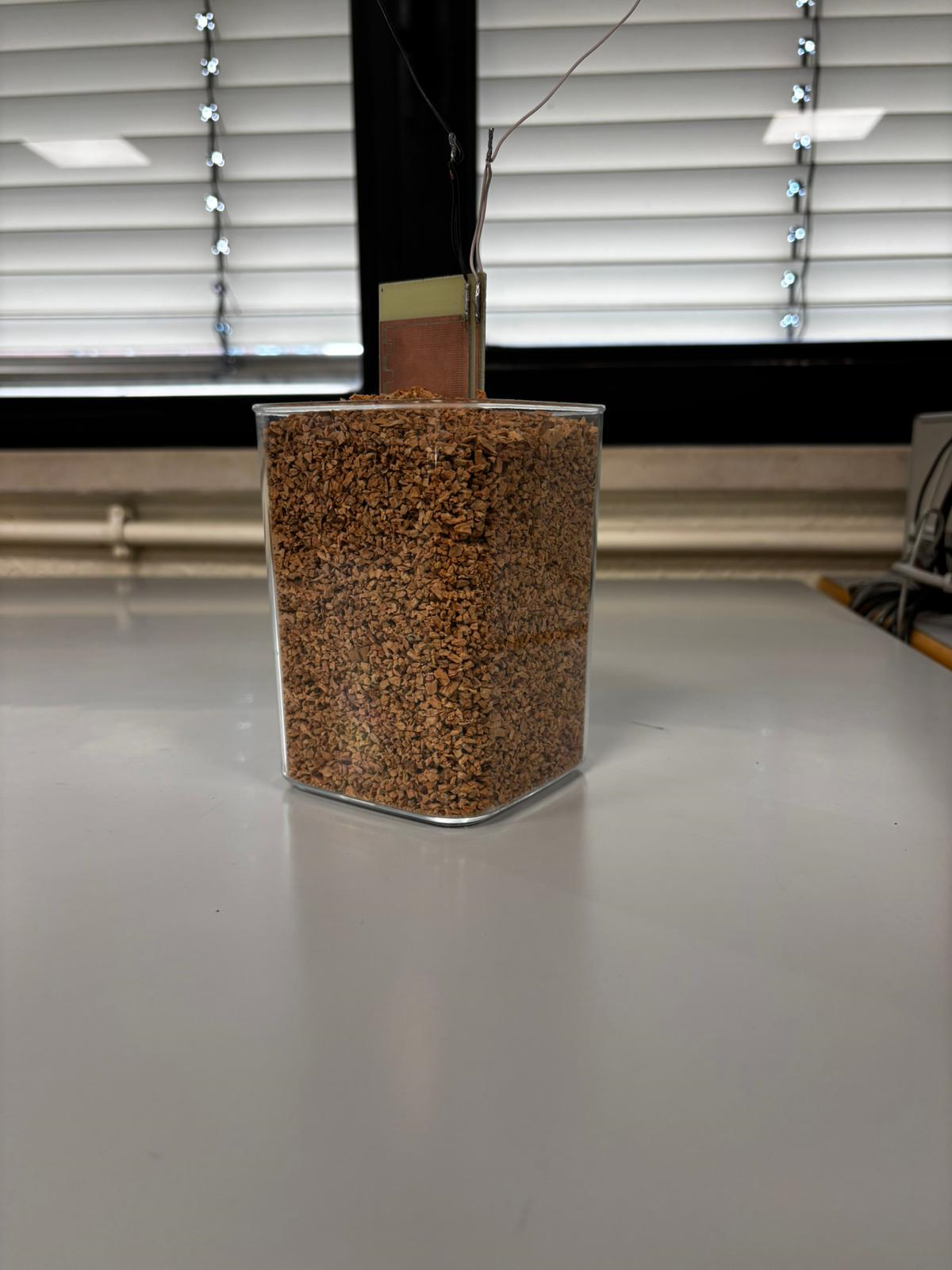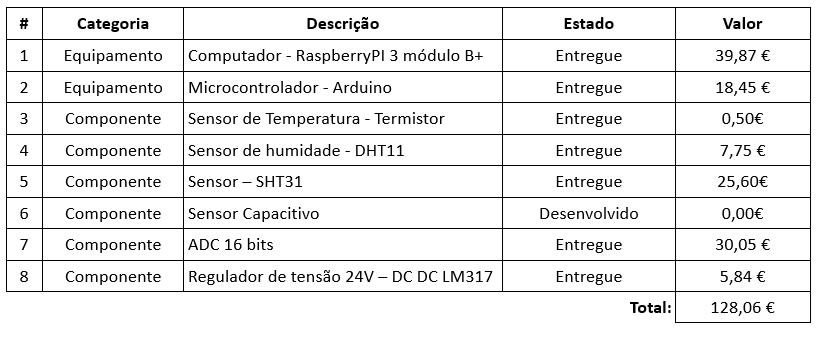Grupo 06 - SIMHUC Project
To ensure the quality of cork stoppers, it is important to monitor the humidity of cork granules. Real-time control of the moisture content in the granules is crucial during the manufacturing process of cork stoppers, as undesirable levels can lead to the disintegration of the stoppers, the growth of fungi, or excessive elasticity or rigidity. Currently, in many industries, the monitoring of cork granule humidity is performed manually, using intrusive devices that require human intervention. The objective of the SIMHUC project was to develop a sensor capable of measuring the humidity of cork granules without contact and in real time, to facilitate and automate the monitoring process.
Challenge
Currently, in many industries, the humidity of cork granules is measured manually using intrusive devices, requiring an operator to perform the process. The challenge was to develop a system capable of measuring the humidity of cork granules without contact and in real time, while also integrating it into existing industrial machines to automate the monitoring process.
Azevedos Indústria SA proposed the development of a system to measure the humidity of cork granules without contact and in real time, ensuring integration with the existing automation of the molding machine. The system should enable continuous and accurate monitoring of humidity levels during the production process, with a digital interface that guarantees compatibility and efficient communication with the machine’s automation system.
In response to this challenge, our team developed a coplanar capacitive sensor capable of measuring cork granule humidity without contact and in real time. This system was complemented by ambient humidity and temperature sensors, along with a digital interface that displays the cork granules’ humidity, ambient temperature, and humidity levels. Additionally, real-time graphs were developed to present the measured values, enabling analysis of the relationship between environmental conditions and the humidity present in the granules. All data captured by the sensors is stored in a database, allowing future access and paving the way for communication with industrial servers, facilitating deeper studies and advanced integration in the future.

Results
In the following figure, the block diagram of our system architecture can be observed, allowing an understanding of its behavior and the role and representation of each unit.

In the figure above, we can observe the inputs and outputs of our system. The inputs include our coplanar capacitive sensor, developed in an RC circuit, the NTC 330 ND03 thermistor as the temperature sensor, and the SHT31 as the humidity sensor, all integrated with the main board, which is our Raspberry Pi. The outputs are displayed on a digital interface, providing information on the humidity of the cork granules and the ambient temperature and humidity. The interface includes real-time graphs of the values obtained from the sensors and generates an alert if the humidity of the granules falls outside the range of 6% to 15%.
Coplanar Capacitive Sensor: Coplanar capacitive sensor on a PCB, integrated into an RC circuit, responsible for measuring thehumidity in cork granules.
Temperature and Humidity Sensors: SHT31 and NTC 330 ND03,which are responsible for measuring ambient temperature andhumidity, to enable future observation of the influence ofenvironmental conditions on the humidity in cork granules.
Main Board: Raspberry Pi, which serves as the control unit thatreads the data obtained from the sensors, processes it, and sends itto the database, where it can later be viewed on the web server.
We wrapped our coplanar capacitive sensor around the cork granule samples, allowing it to measure the humidity present and send the values to the Main Board, where they are read and processed.
On the web server, it is possible to view the humidity values of the cork granules as well as the ambient temperature and humidity, which are stored in a database. Real-time graphs of the values obtained by the sensing unit are also available for analysis.


More information
Financial Status


![[Vídeo do projeto]](/projects/Group06/logotipo.png)